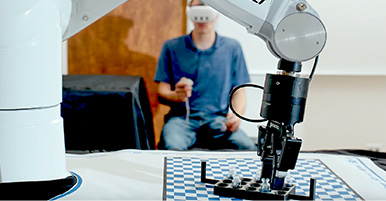Citation
Carpenter, C. M., Sun, C., Pratx, G., Rao, R., & Xing, L. (2010). Hybrid x‐ray/optical luminescence imaging: Characterization of experimental conditions. Medical physics, 37(8), 4011-4018.
Abstract
Purpose
The feasibility of x-ray luminescence imaging is investigated using a dual-modality imaging system that merges x-ray and optical imaging. This modality utilizes x-ray activated nanophosphors that luminesce when excited by ionizing photons. By doping phosphors with lanthanides, which emit light in the visible and near infrared range, the luminescence is suitable for biological applications. This study examines practical aspects of this new modality including phosphor concentration, light emission linearity, detector damage, and spectral emission characteristics. Finally, the contrast produced by these phosphors is compared to that of x-ray fluoroscopy.
Methods
Gadolinium and lanthanum oxysulfide phosphors doped with terbium (green emission) or europium (red emission) were studied. The light emission was imaged in a clinical x-ray scanner with a cooled CCD camera and a spectrophotometer; dose measurements were determined with a calibrated dosimeter. Using these properties, in addition to luminescence efficiency values found in the literature for a similar phosphor, minimum concentration calculations are performed. Finally, a 2.5 cm agar phantom with a 1 cm diameter cylindrical phosphor-filled inclusion (diluted at 10 mg/ml) is imaged to compare x-ray luminescence contrast with x-ray fluoroscopic contrast at a superficial location.
Results
Dose to the CCD camera in the chosen imaging geometry was measured at less than 0.02 cGy/s. Emitted light was found to be linear with dose and concentration
and concentration  . Emission peaks for clinical x-ray energies are less than 3 nm full width at half maximum, as expected from lanthanide dopants. The minimum practical concentration necessary to detect luminescent phosphors is dependent on dose; it is estimated that subpicomolar concentrations are detectable at the surface of the tissue with typical mammographic doses, with the minimum detectable concentration increasing with depth and decreasing with dose. In a reflection geometry, x-ray luminescence had nearly a 430-fold greater contrast to background than x-ray fluoroscopy.
. Emission peaks for clinical x-ray energies are less than 3 nm full width at half maximum, as expected from lanthanide dopants. The minimum practical concentration necessary to detect luminescent phosphors is dependent on dose; it is estimated that subpicomolar concentrations are detectable at the surface of the tissue with typical mammographic doses, with the minimum detectable concentration increasing with depth and decreasing with dose. In a reflection geometry, x-ray luminescence had nearly a 430-fold greater contrast to background than x-ray fluoroscopy.
Conclusions
X-ray luminescence has the potential to be a promising new modality for enabling molecular imaging within x-ray scanners. Although much work needs to be done to ensure biocompatibility of x-ray exciting phosphors, the benefits of this modality, highlighted in this work, encourage further study.


